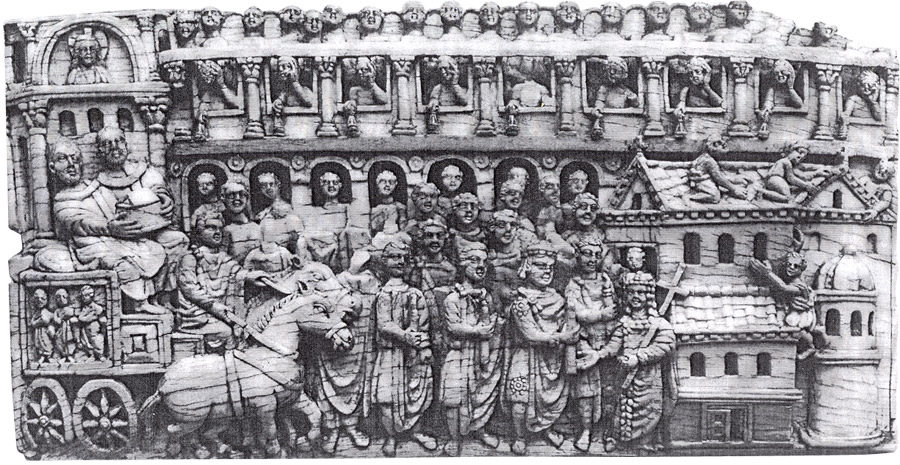The story of St. Stephen's bones begins with a vision near Jerusalem and ends with sea voyages throughout the late Roman world. The proto-martyr of the early church, Stephen, through his recovered relics, instigated bouts of internal brawling between local bishops and spasms of external political struggles between Jewish dignitaries and the ascendant Church.
Journeying further west, fragments of Stephen's body set off waves of anti-Jewish hostility. This animus had important consequences, from the forced converson of Minorca's Jews to Augustine's insistence on Jewish freedom of practice in his City of God. The relic controversy is illustrated in this unique, possibly fifth century C.E. ivory monument, the so-called "Trier Ivory," named after the German Church where it is now located, depicting the "adventus ceremony" celebrating the bringing of the holy relics of the saints, perhaps to the gates of Constantinople, seat of the Byzantine Church.
